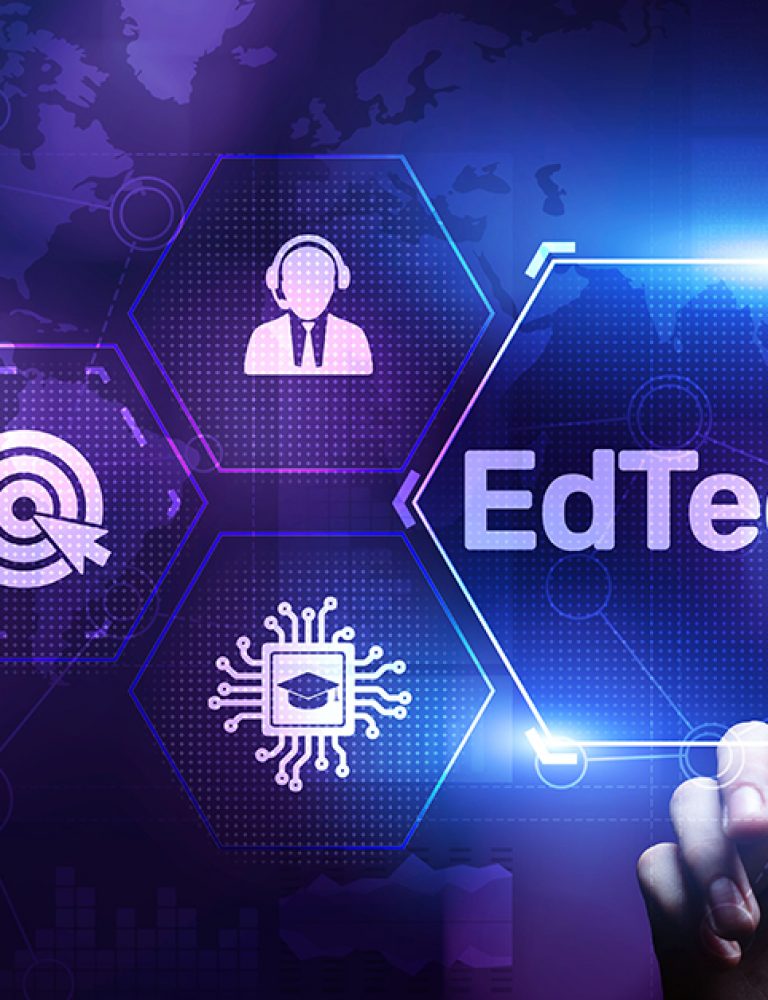The rapid advancement of technology has brought about a significant shift in how we work and learn. One of the most notable developments in recent years has been the rise of Artificial Intelligence (AI).
While this has caused much debate on its impact on employment and the workforce, there is no doubt that AI continues to shape the future of work. It is crucial to recognize that it can also be a powerful tool for learning and development (L&D) in organizations.
As the skills required for the workplace continue to evolve, companies must adapt to keep up with the changing demands of their industries. This is where L&D becomes crucial, as it assists organizations in upskilling their employees and remaining competitive in a constantly changing business landscape.
Online training has become an increasingly popular method of delivering L&D, offering a cost-effective and scalable solution to provide employees with the skills and knowledge they need to succeed.
With the help of specialized software, AI can also enhance the effectiveness of online training through personalized learning experiences and real-time feedback.
In this blog, we will explore the intersection of AI and L&D and how online training can help organizations future-proof their workforce in a rapidly changing world.
Table of Contents
- What is L&D?
- Evolution of L&D
- The Future of L&D: Online Training at Its Best
What is L&D?
Learning and development (L&D) is the process of improving the skills, knowledge, and performance of employees in an organization. It is essential as it ensures that employees have the tools necessary for their roles, whether it’s through technical training, soft skills development, or leadership training.
Online training programs can offer a flexible and cost-effective way for organizations to provide L&D opportunities to their employees. In today’s fast-paced business world, L&D has become a critical function for organizations looking to stay competitive and adapt to new challenges.
Evolution of L&D
L&D has undergone significant evolution over the past few decades, driven by several factors, like technological changes, globalization, and the evolving needs of organizations and their employees.
From being primarily focused on compliance and training delivery, the role of L&D professionals has become more proactive and focused on developing the skills and capabilities of employees, to help them stay ahead of the curve in a dynamic workspace.
In the past, the primary focus of L&D was to train employees on new software or processes and to keep them up-to-date on compliance matters. However, times have changed, and organizations are now using L&D to be agile and adaptable.
One of the key drivers of this evolution has been the advent of eLearning and other digital technologies. These online training tools have enabled L&D professionals to deliver content more efficiently. They also allow learners to access and engage with learning materials anywhere and anytime.
Another crucial factor has been the increased recognition of the importance of soft skills and the need to develop employees’ leadership, communication, and problem-solving abilities. It has led to holistic learning programs incorporating a broader range of skills and competencies.
As organizations have become more distributed and employees more independent, L&D has had to adapt its approaches to meet the needs of a more diverse and dispersed workforce.
This has included the development of more flexible and self-directed learning programs, which enable employees to access and engage with learning materials on their terms and at their own pace.
Finally, the growing importance of data and analytics has led to a greater focus on measuring the impact and effectiveness of L&D programs. Learning analytics are being used to help organizations quantify the ROI of their investments and to make more informed decisions on their future L&D programs.
By investing in L&D, organizations can increase employee engagement, satisfaction, and retention while improving overall business performance.
As L&D evolves, we can expect to see a continued focus on delivering personalized, flexible, and impactful learning experiences, which enable employees to develop the skills and competencies they need to succeed in an ever-changing world.
The Future of L&D: Online Training at Its Best
The future of L&D in the workplace is evolving due to technological advancements and changing work cultures.
In the next few years, the traditional model of L&D will be replaced with more innovative approaches emphasizing personalized and immersive learning experiences.
1. Artificial Intelligence (AI)
One significant change that will take place is the rise of adaptive learning environments. These platforms will use AI algorithms to personalize learning experiences for each employee.
The AI will use data, such as job function, learning style, and skill level, to design a customized learning path specific to the employee’s needs. As a result, employees will be able to learn at their own pace and receive feedback that is tailored to their strengths and weaknesses.
2. Microlearning
Microlearning is a trend that will play a significant role in the future of L&D.
Microlearning involves breaking down complex information into small, bite-sized pieces that are easier to comprehend and remember. Most often, this can be done easily through technology and the right digital publishing platform.
Employees can learn on the go and at their convenience using their mobile devices.
3. Virtual Reality (VR) and Augmented Reality (AR)
Another trend in the future of L&D is the increasing use of VR and AR technologies. These technologies will offer immersive and interactive learning experiences that are more engaging as compared to traditional classroom-based training.
For example, employees can learn to operate complex machinery or equipment in a safe and controlled virtual environment. Additionally, these technologies will enable companies to train employees who work remotely.
4. Even More Data-Driven
Finally, L&D will also become even more data-driven in the future. Companies will use data analytics to track employee performance and identify areas where training is needed. By analyzing data, L&D professionals can design more effective training programs and measure the ROI of their training investments.
The future of L&D in the workplace is bright, and companies that invest in innovative training methods and technologies will have a competitive advantage.
The rise of adaptive learning environments, VR and AR technologies, micro-learning, and data analytics will all play significant roles in shaping the future of L&D.
Bottom Line
Going forward L&D will be shaped by implementing adaptive learning environments and AI technology. This shift in approach will allow individuals to learn at their own pace, increasing the efficiency of the upskilling process.
However, it is important to note that the human factor remains essential to the success of L&D programs. Human cooperation will be required to effectively integrate these technologies and ensure they align with organizational goals and employee needs.
By understanding the intersection of AI and human capability in L&D, companies can create dynamic solutions that cater to the unique learning needs of their employees while also boosting their performance and productivity.
To this end, KITABOO offers organizations the ability to create, publish and distribute customizable training content. We also offer a variety of assessment and evaluation tools to track learner progress and evaluate the effectiveness of training programs.
To know more on how KITABOO can help enhance your employee training, write to us at KITABOO@hurix.com.
Discover How An Ebook Conversion, Publishing & Distribution Platform Can Help You
Kitaboo is a cloud-based content platform to create-publish & securely distribute interactive mobile-ready ebooks.
You May Also Like








